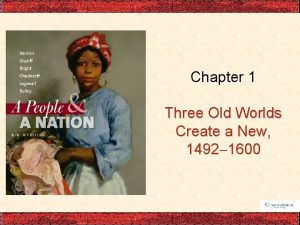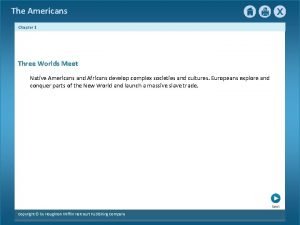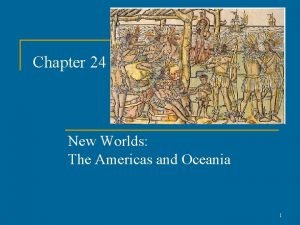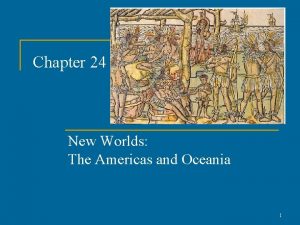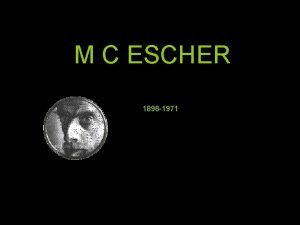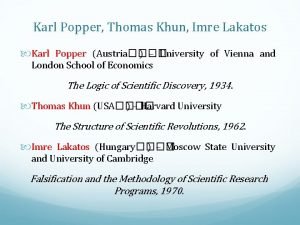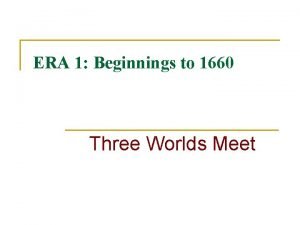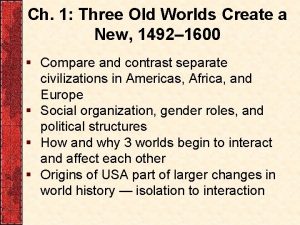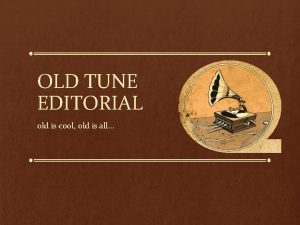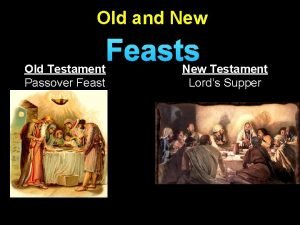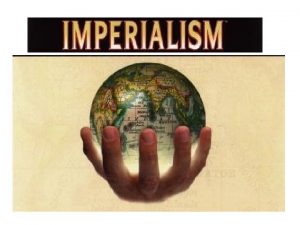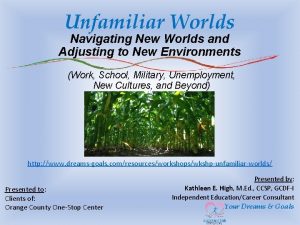Chapter 1 Three Old Worlds Create a New











- Slides: 11

Chapter 1 Three Old Worlds Create a New 1492 -1600

Pueblo Bonito, Chaco Canyon, New Mexico Pueblo Bonito in Chaco Companion, in what is now the state of New Mexico. More than six hundred buildings were present on the well-defended site. The circular structures were kivas, used for food storage and religious rituals. Dewitt/Jones, CORBIS

Native Cultures of North America The natives of the North American continent effectively used the resources of the regions in which they lived. As this map shows, coastal groups relied on fishing, residents of fertile areas engaged in agriculture, and other peoples employed hunting (often combined with gathering) as a primary mode of subsistence.

Decorative Asante Brass Weight from Lower Guinea This decorative brass weight, created by the Asante peoples of Lower Guinea, was used for measuring gold dust. It depicts a family pounding fu-fu, a food made by mashing together plantains (a kind of banana), yams, and cassava. The paste was then shaped into balls to be eaten with soup. This weight, probably used in trading with Europeans, shows a scene combining foods of African origin (plantains and yams) with an import from the Americas (cassava), thus bringing the three continents together in ways both symbolic and real. Trustees of the British Museum. Photo by Michael Holford

Europe in 1453 The Europeans who ventured out into the Atlantic came from countries on the northwestern edge of the continent, which was divided into numerous competing nations.

16 th Century Prayer Book Manuscript, Portugal Daily life in early sixteenth-century Portugal, as illustrated in a manuscript prayer book. At top a prosperous family shares a meal being served by an African slave. Other scenes show male laborers clearing land hunting birds (left) and chopping wood (right), while at bottom a woman plants seeds in a prepared bed and in the top background female servants work in the kitchen. Museu Nacional de Arte Antiga, Lisbon, Portugal

Atlantic Winds and Islands European mariners had to explore the oceans before they could find new lands. The first realm they discovered was that of Atlantic winds and islands.

Relief Carving of Squarerigged Vessel, from the Tomb of Vasco da Gama, Belém, Portugal. A relief carving of a squarerigged vessel, with a lateen sail at the rear for maneuverability. Fittingly, it is found on Vasco da Gama’s tomb in the Jéronimos monastery in Belém, Portugal, which is located on the very spot whence he set sail in just such a ship on his voyage to India. Mary Beth Norton

European Explorations in America In the century following Columbus’s voyages, European adventurers explored the coasts and parts of the interior of North and South America.

An Early Illustration of a Carib Lean-to Shelter An early illustration of a Carib lean-to shelter, with baskets, a pot, a loom (hanging at left), and a hammock—a novel place to sleep that fascinated European observers. The man at center has coated his skin with annatto, a plant extract that served as both insect repellent and sunscreen. 1996 MAPes MONDe Ltd.

Major Items in the Columbian Exchange As European adventurers traversed the world in the fifteenth and sixteenth centuries, they initiated the “Columbian Exchange” of plants, animals, and diseases. These events changed the lives of the peoples of the world forever, bringing new foods and new pestilence to both sides of the Atlantic.
 Three old worlds create a new
Three old worlds create a new Norton worlds together worlds apart
Norton worlds together worlds apart Chapter 1 three worlds meet
Chapter 1 three worlds meet Chapter 24 new worlds the americas and oceania
Chapter 24 new worlds the americas and oceania Chapter 24 the americas and oceania
Chapter 24 the americas and oceania Chapter 24 the americas and oceania
Chapter 24 the americas and oceania New-old approach to creating new ventures
New-old approach to creating new ventures Njbta
Njbta Jika noel(create(q)) adalah 0 maka front(create(q)) adalah
Jika noel(create(q)) adalah 0 maka front(create(q)) adalah Mc escher castrovalva
Mc escher castrovalva Karl popper theory
Karl popper theory Three worlds meet quiz
Three worlds meet quiz
